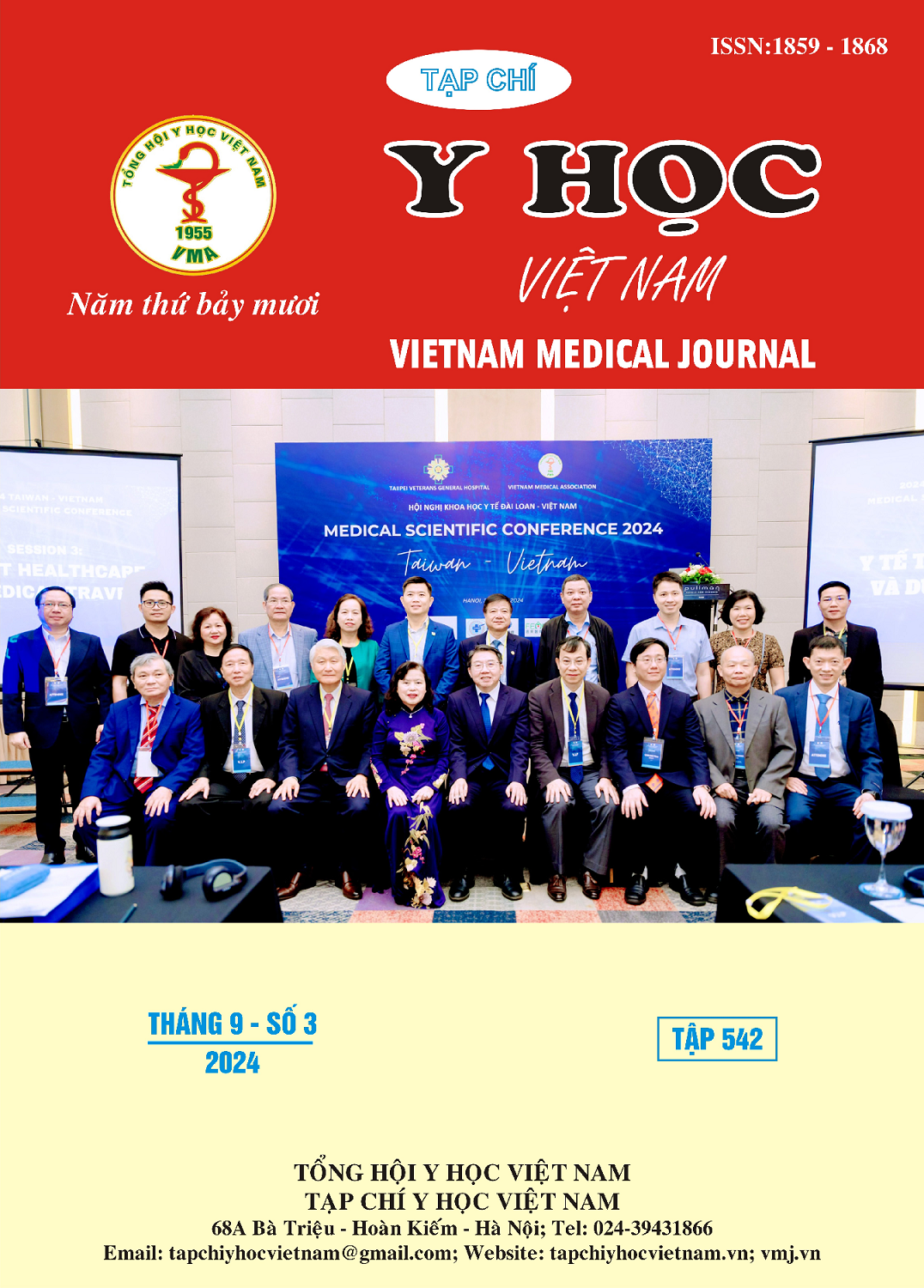INVESTIGATING THE ITGB3 GENETIC POLYMORPHISM CHARACTERISTICS IN PATIENTS UNDERGOING CORONARY STENTING INTERVENTION
Main Article Content
Abstract
Objects: Survey of ITGB3 gene polymorphism characteristics and relationship with clopidogrel platelet aggregation response as well as some clinical and paraclinical features in patients undergone coronary artery stenting intervention. Subjects and methods: Cross-sectional descriptive study with 171 patients over 18 years old who were successfully intervented coronary artery stenting and treated with clopidogrel at 175 Military Hospital and 103 Military Hospital from 09/2021 to 12/2022. Results: The majority were men (74.86%) and over 60 years old (59.07%), significant difference compared to women with p<0.05. Smoking also accounts for a high rate (36.26%) and is higher in patients under 60 years old (p<0.05). The main genotype of ITGB3 T1565C was TT with 91.23%, TC genotype accounts for 8.77% and no cases of homozygous recessive CC were recorded. The T and C allele frequencies are 95.61% and 4.39%, respectively. No statistically significant difference was noted when comparing platelet aggregation and clopidogrel resistance by genotype with p>0.05. There is a difference in the amount of damaged coronary artery vessels when comparing TT (1.71±0.77) and TC (2.27±0.88) genotypes with p<0.05. Conclusion: The allele frequencies of ITGB3 T1565C were 95.61% for T and 4.39% for C. No association had been observed between the genotype and the platelet aggregation or clopidogrel resistance. The amount of coronary artery vessel lesions in patients with the TC genotype is higher compared to those with the TT genotype, with p<0.05
Article Details
Keywords
ITGB3, genetic polymorphisms, platelet aggregation, clopidogrel, coronary artery disease.
References
2. Li Miaonan, Wang Hongju, Xuan Ling, et al. (2017), "Associations between P2RY12 gene polymorphisms and risks of clopidogrel resistance and adverse cardiovascular events after PCI in patients with acute coronary syndrome", Medicine, 96(14), e6553.
3. Grinshtein Y. I., Kosinova A. A., Grinshtein I. Y., et al. (2018), "The Prognostic Value of Combinations of Genetic Polymorphisms in the ITGB3, ITGA2, and CYP2C19*2 Genes in Predicting Cardiovascular Outcomes After Coronary Bypass Grafting", Genet Test Mol Biomarkers, 22(4), 259-265.
4. Thygesen Kristian, Alpert Joseph S, Jaffe Allan S, et al. (2018), "Fourth universal definition of myocardial infarction (2018)", European Heart Journal, 40(3), 237-269.
5. Knuuti J., Wijns W., Saraste A., et al. (2020), "2019 ESC Guidelines for the diagnosis and management of chronic coronary syndromes", Eur Heart J, 41(3), 407-477.
6. Lawton J. S., Tamis-Holland J. E., Bangalore S., et al. (2022), "2021 ACC/AHA/SCAI Guideline for Coronary Artery Revascularization: A Report of the American College of Cardiology/American Heart Association Joint Committee on Clinical Practice Guidelines", Circulation, 145(3), e18-e114.
7. Hwang S. J., Jeong Y. H., Kim I. S., et al. (2011), "The cytochrome 2C19*2 and *3 alleles attenuate response to clopidogrel similarly in East Asian patients undergoing elective percutaneous coronary intervention", Thromb Res, 127(1), 23-8.
8. Nguyễn Thị Minh Ngọc, Nguyễn Thị Trang, Lương Thị Lan Anh, et al. (2017), "Ứng dụng RT-PCR để xác định nhanh các đa hình gen CYP2C19 và ITGB3 trong chẩn đoán tính kháng thuốc Clopidogrel và Aspirin ở bệnh nhân đặt stent động mạch vành", Tạp chí Y - Dược học quân sự.
9. Kucharska-Newton A. M., Monda K. L., Campbell S., et al. (2011), "Association of the platelet GPIIb/IIIa polymorphism with atherosclerotic plaque morphology: the Atherosclerosis Risk in Communities (ARIC) Study", Atherosclerosis, 216(1), 151-6.
10. Conkbayir C, Ergoren M, Cobanogullari H, et al. (2021), "Associations of the ITGB3 gene rs5918T>C and the APOA1 gene rs1799837C>T markers with serum lipid metabolism in coonary artery disease patients", European Heart Journal, 42(Supplement_1).


